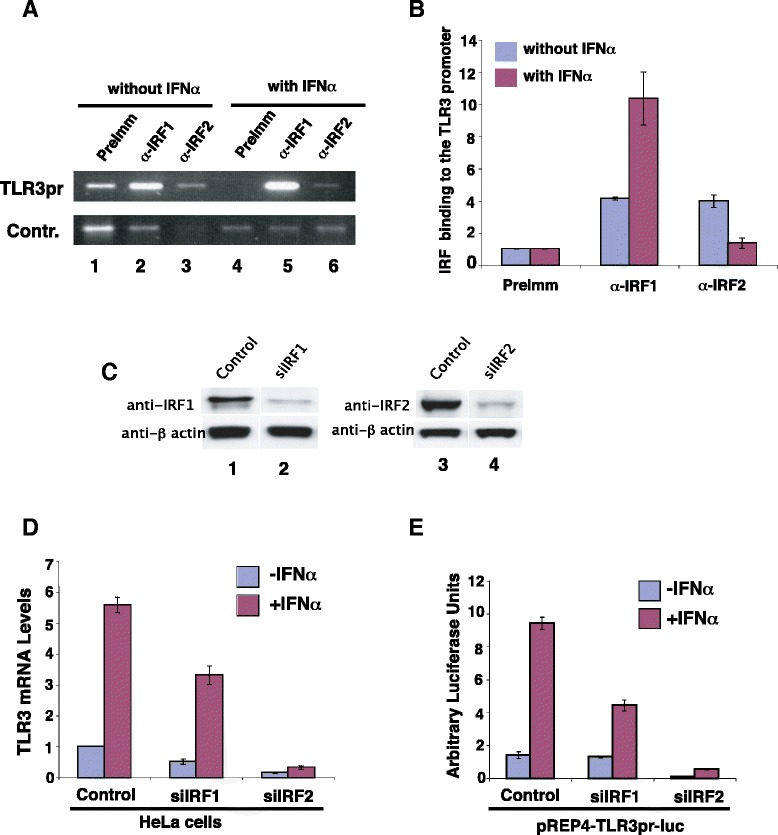Figure 2.

IRF1 and IRF2 differentially regulate the basal and induced expression of the TLR3 gene. A IRF1 and IRF2 binding to the TLR3 promoter in the basal and stimulated states. Chromatin was prepared from HeLa cells with or without IFN-α treatment for 12 hours as in Figure 1B and subjected to immunoprecipitation using anti-IRF1 and anti-IRF2 antibodies. The ChIP DNA was analyzed using specific primers for the TLR3 promoter or for the control sequence of the β globin gene. B The ChIP DNA in panel A was quantified using real-time PCR analysis. C IRF1 and IRF2 were knocked down using small interference RNA constructs. HeLa cells were transfected with pREP4-siIRF1 or pREP4-siIRF2. The cells were harvested after selection with puromycin (1 ug/ml) for 2 days and analyzed by Western blotting. The control is a small interference RNA construct that failed to knock down IRF1. β actin was used as a protein loading control. D Knocking-down IRF1 and IRF2 inhibits the expression of the TLR3 gene. HeLa cells were transfected with a control, siIRF1, or siIRF2 and selected with puromycin for two days. Following stimulation with IFN-α for 12 hours, total RNAs were isolated and the TLR3 mRNA levels were determined using q-PCR. E Knocking-down IRF1 and IRF2 inhibits the TLR3 promoter activity. pREP4-TLR3pr-luc was co-transfected into HeLa cells with a control, or siIRF1, or siIRF2 construct for 48 hours. Following stimulation with IFN-α for 12 hours, the cells were harvested and luciferase activity determined as in Figure 1A.
